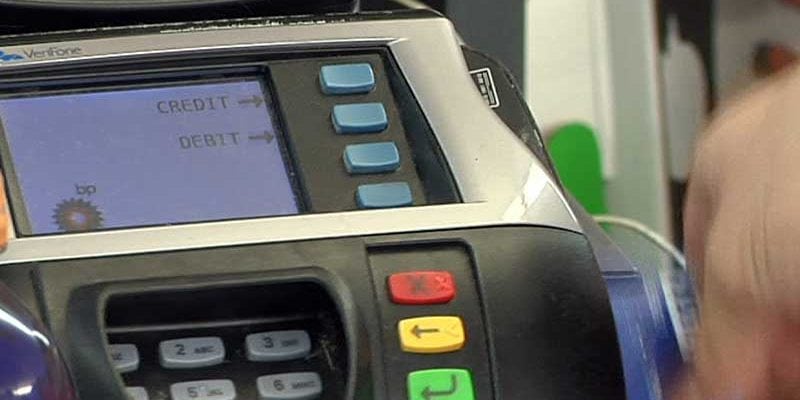
Pete Real
Considering how common the use of credit and debit cards is today, few people give much thought to how the payment process actually works. Yet behind that process is a sequence of steps that while normally executed in seconds (or more often fractions of seconds) involves several players and multiple handoffs of data. Let’s take a look at what transpires in those moments while you and the customer are waiting to close the sale.
Step 1: Swiping or entering the credit card information
After the customer presents his or her card and the merchant processes the transaction (usually and preferably by swiping the card through a magnetic stripe reader), the first thing that occurs is encryption of the data. Necessary for PCI compliance, this process is handled by the terminal as it “handshakes” with the payment gateway of the merchant processing service. It ensures that the card data will not be compromised if it is intercepted during the transmission process. (Once upon a time this took place across a phone line via a modem connection, but today the vast majority of transactions are authorized via the internet.)
Step 2: Authorization
Once the merchant processor has the transaction data, it in turn submits a request for authorization to the appropriate card network. The card networks represent the various card “brands”: VISA, MasterCard, American Express, Discover, and so on. The card network then hands off the authorization request to the issuing bank or institution for that particular card, which will actually fund the transaction upon completion.
So if, for example, you complete a purchase using a Capital One MasterCard, the request goes from the merchant to the merchant processor to MasterCard to Capital One. The issuer looks at its records for that particular card and makes an authorization decision. The basics are fairly simple, of course. The card cannot be expired or cancelled and must have sufficient credit remaining to cover the purchase amount. The cardholder must also be current on his or her account. However, complex algorithms are also applied to judge whether the transaction is suspect from a fraud standpoint.
The patterns and criteria taken into consideration are many, varied, and in most cases proprietarily secret, but when your card is mysteriously declined even though your bill has been paid and you have credit available, fraud detection is usually the culprit. In some cases the card issuer may attempt to make contact with the cardholder to inquire about the validity of the transaction, but usually it will fall upon the customer to make that contact. The good news is that a mistaken fraud block can almost always be resolved and lifted very quickly.
Step 3: Approved or declined
Once an authorization (or declination) decision has been made by the card issuer, the data handoff shifts into reverse. The issuer sends the authorization to the card network, which then forwards it to the merchant processor. From there it returns through the payment gateway to the merchant’s terminal (whether physical or virtual) and appears as an authorization code or a declination.
All of this happens within a couple of seconds in most cases. To streamline an already streamlined process even further, some card issuers and networks have an abbreviated approval process for transactions under a certain dollar amount, frequently $25 but now increasing to $50 in more and more cases. If you consider how many times the data changes hands, that speed is really quite impressive.
(For American Express and Discover transactions, by the way, the interaction between card network and card issuer is eliminated. For these cards the network and the issuer are one and the same.)
Step 4: Credit card settlement and payment
Of course, a successful authorization is not the end of the story. At that point the merchant doesn’t have the customer’s money; all he or she has is a promise from the card issuer to pay. To fully close the loop, we must also consider the clearing and settlement process.
At the end of the business day (in most cases), the merchant will “batch out” the card processing terminal and submit the day’s transactions for payment. As the first step in the clearing process this is very important, because the merchant will not be paid for a transaction until this takes place. If a week’s worth of transactions is allowed to sit in the terminal, they will all be paid together when the batch is finally submitted to the processor. (This is not helpful to the merchant’s cash flow, needless to say, and it also tends to complicate the accounting process.)
Upon receiving the batch, the processor splits the batch by card brand and submits each set to the appropriate network. In most cases the processor then credits the merchant’s bank account, in effect advancing the funds that will ultimately come from the card issuer.
Acting as the middleman, the card network passes the transaction data on to each card issuer. It also debits the funds from the card issuer’s settlement account and passes them back to the merchant processor. The card issuer, meanwhile, posts the transaction and charges it against the card issuer’s credit line; it will subsequently appear on the next monthly statement.
The clearing and settlement process typically takes two to three days. Many merchant processors, however, will deposit the funds from a batch into the merchant’s account on the next business day, though some may take a day or two longer. American Express transactions also require one to two days longer to settle and deposit.
Who pays for all this?
Of course, the various discount and other fees are subtracted from what the merchant receives. This can be handled in one of two ways. Under a gross payment system, the full amount of each batch is deposited and fees are debited separately from the same merchant bank account. With net payment, fees are deducted from each batch prior to deposit. Most processors will give the merchant a choice, and many business owners find gross payment easier from an accounting standpoint. Some, however, may prefer to in essence “pay what they owe” immediately instead of being hit with what can be hundreds or even thousands of dollars in discount fees (depending on transaction volume) all at once.
While the details of the card authorization process may be complex, the basic process is fairly easy to understand. Knowing what happens to translate a credit card purchase into money in your bank account may help you to understand the fee structures involved and deal with any problems that might arise.
If you have more questions on the process behind card acceptance and settlement, feel free to ask us here or give us a call directly at 866-949-7267. We have been involved in payment processing for over 20 years and understand the process and how it affects both customers and merchants.
















